 |
 |
07.17.25

Leading Thoughts for July 17, 2025
IDEAS shared have the power to expand perspectives, change thinking, and move lives. Here are two ideas for the curious mind to engage with: Adam Galinsky on encouraging the right result: “We often focus on the person, and what they generally do wrong. The next time you find someone repeatedly failing or find yourself being repeatedly annoyed at someone, ask yourself a few questions: Is the current situation setting them up to fail, or setting me up to be annoyed? What can I do to set this person up for success?” Source: Inspire: The Universal Path for Leading Yourself and Others Mark Miller on working on the future: “The best leaders are comfortable being uncomfortable. We should always be working on problems bigger than our calendar and our checkbook can support. This is where we’ll find personal growth and new frontiers for our organization. The reward you receive for solving a problem is a bigger problem to solve.” Source: Uncommon Greatness: Five Fundamentals to Transform Your Leadership Look for these ideas every Thursday on the Leading Blog. Find more ideas on the LeadingThoughts index.
Posted by Michael McKinney at 09:14 AM
07.11.25

8 Beliefs That Will Make You Limitless
UNDERSTANDING how people’s minds work gives us a foundation to make change happen. Sometimes we get stuck until we find the insight or the perspective that makes all the difference. In The Difference That Makes the Difference: NLP and the Science of Positive Change, Josh Davis and Greg Prosmushkin present eight shifts in thinking that can be the difference to move change forward. The authors offer these tools derived from Neurolinguistic Programming to help people apply them in a positive way to help lift people up. 1. How We Experience the World Is Not the Same as Reality We don’t see reality. We see our perception of reality. Our worldview—our expectations—distort reality. We see what we think is important. “What we experience is not reality, it is instead a version of reality that serves our needs and is heavily influenced by what is going on in our minds.” People don’t react to reality—they react to their experience of reality. Those two things are not the same. So, if you want to understand someone or help them change, rather than trying to understand reality, you should try to understand how they experience reality. Doing so reveals how people get stuck and opens wide the possibilities for change. Once you learn how someone experiences the world, it becomes clear what to try changing in order to help them. You are then in a position to find the difference that makes the difference for them. This means that most of our limitations are of our own making. Your options and possibilities grow when you expand and enrich your mental model or worldview. Begin by presuming that you don’t know everything about yours or others’ mental model, and change will become easier. 2. Why Not Me? When you believe you can’t, you behave in a way to bring about the thing you don’t want. Believing that you can is a strong predictor that you will. How differently would you behave if you thought that if they can do it, it is possible for you as well? Believing that if it’s possible for someone, it’s possible for you is not everything, but it can be life-changing. Life is magical, but not magic. But taking on this belief is often critical in leading to these outcomes. Believing you can doesn’t mean that you can do anything and everything. But you can learn what approach others that have gone before you have approached what you are trying to do and adjust your mental model accordingly. 3. All I Need Is Already Within Me Do I have what it takes to do what I want to do? Progress to what we want always begins with the first step, no matter where you are. Focus on the process, not the result. If we believe that we don’t have what it takes, we will not make the changes to move us in the direction we want to go in. All we need to begin is already within us. Research has now also shown that the effects of this belief are reliable-when people believe they have the resources to change, they are significantly more likely to do so. This is true whether it is a personal or professional change. And the opposite has been found, too—even when people do have the resources, if they believe they don’t, they don’t take action and don’t change their situation. When we focus on what we have rather than what we don’t have, we can make the first step. 4. There’s No Failure, Only Feedback Too often, we take failure as a sign that we are not up to the task. We begin to doubt ourselves. We need to reframe our experience. It’s not failure. It’s feedback. Another step to get you where you want to go. We learn more completely when we see failure as feedback. Whenever we put ourselves out there and try to do something new, we run the risk that we may not do it well. People who choose to use a feedback frame process information about how they performed differently from those who use a failure frame. Even before one second has gone by after getting information about performance, the differences can be seen in the brain. When using a feedback frame, our brains give more attention to the information coming in and use it to improve future performance. Whereas when people see the information as judgment about themselves or whether they failed, then the brain does not capture or use the information coming in as effectively. 5. How My Message Landed Matters More Than What I Meant When communication fails, it’s feedback that you need to course-correct and try again. Fortunately, there is a useful solution for communicating well even when your intended message may not be getting through as planned—presume that the meaning of your communication is the response you get. Take that responsibility and you will take the right steps to find out what you are communicating and ultimately get the right messages across. 6. If At First I Don’t Succeed, I Must Try Something Else This advice is based on the idea that “in any system, the element with the most flexibility exerts the most influence. Most of the time, the person who is able to adapt to the situation on the ground is the one who gets their needs met.” Or perhaps you can put it this way: Insanity is doing the same thing over and over and expecting different results. (No, Einstein didn’t say that.) To be flexible, you need to keep the end goal in mind and think through these steps: 1. Clarify your ultimate need—your why.
7. Assume Good Intentions Get curious, not judgmental. Thinking we know everything puts a lid on our learning and effectiveness. “Whenever you encounter resistance, get curious about the other person’s positive intention first.” People most often do not do bad things for the purpose of doing bad things; they have a positive intention they are trying to work through. This doesn’t justify bad behavior, but if you can find a way to get at the positive intention, you have a chance to change those bad behaviors. Ask yourself, “Why was that important to them to say or do?” as many times as it takes to get the answer. 8. If I Knew Then What I Knew Then Dwelling on past mistakes and criticizing yourself only drains your energy and distracts you from forward momentum. This is true for ourselves and others: “People behave in the best ways they know how and make the best choices they can, given their mental model of the world.” Behavior makes sense in the context of the mental model in use. If we have unconditional positive regard for ourselves and others, we can have compassion in any context. The authors go on to provide 10 tools for understanding someone’s mind and then how to use this information to lead change in our own lives and those of others. 
Posted by Michael McKinney at 06:54 AM
07.10.25

Leading Thoughts for July 10, 2025
IDEAS shared have the power to expand perspectives, change thinking, and move lives. Here are two ideas for the curious mind to engage with: Margie Warrell on courage: “The biggest barrier standing between you and your most inspiring life and legacy is not external. It’s you. Dismantling that barrier begins with deciding to focus on what you want—on your boldest vision and highest good. While life may throw a few curve balls your way, the decisions in your life, not the conditions of your life, are what will ultimately shape the person you become.” Source: The Courage Gap: 5 Steps to Braver Action Joshua Medcalf and Lucas Jadin on mental resilience: “But when your mind tells you to quit, I’ve learned that you are just scratching the surface of your potential. You have so much left. If you can handle the voice of fear, you will find levels of grit, determination, and strength you didn’t know existed.” Look for these ideas every Thursday on the Leading Blog. Find more ideas on the LeadingThoughts index.
Posted by Michael McKinney at 11:10 AM
07.07.25

13 Habits of Highly Successful Risk-Takers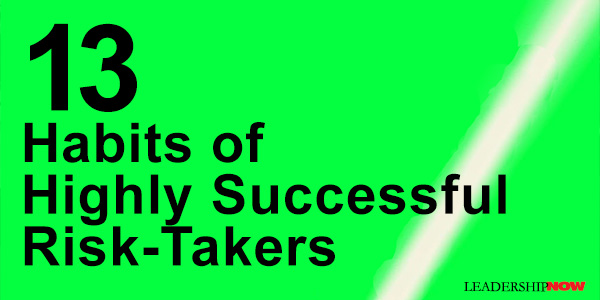
WE all take risks every day, but some people take it to a whole new level. These people make calculated risks. It requires a different mindset. In One the Edge: The Art of Risking Everything, Nate Silver explains what that entails: 1. Successful risk-takers are cool under pressure. They don’t try to be heroes, but they can execute when the chips are down. It doesn’t matter how well you execute in everyday situations—you’ll never reach the top of your craft if you choke when the pressure is on. Don’t try to be a hero-just do your job. 2. Successful risk-takers have courage. They’re insanely competitive and their attitude is: bring it on. 3. Successful risk-takers have strategic empathy. They put themselves in their opponent’s shoes. 4. Successful risk-takers are process-oriented, not results-oriented. They play the long game. But the long run can take a long time indeed—so in the meantime, we focus on our process. 5. Successful risk-takers take shots. They are explicitly aware of the risks they’re taking—and they’re comfortable with failure. But successful risk-takers are perpetually in search of +EV [expected value] opportunities and willing to pull the trigger. They don’t come along all that often. We probably don’t want everyone in society taking long-shot wagers. But we do want some people willing to risk everything on bets that can have a huge payoff to society. 6. Successful risk-takers take a raise-or-fold attitude toward life. They abhor mediocrity, and they know when to quit. The riskiest course of action is oftentimes just remaining passive. 7. Successful risk-takers are prepared. They make good intuitive decisions because they’re well trained—not because they “wing it.” Training, ironically, is often the best preparation to handle the situations that you don’t train for. 8. Successful risk-takers have selectively high attention to detail. They understand that attention is a scarce resource and think carefully about how to allocate it. The one thing you don’t want is to be consumed by the stakes of the mission; that’s a waste of bandwidth. You need your full attention on where you are and what you can do to help it to ensure it’s going right… and adapt and adjust if it starts to not go right. 9. Successful risk-takers are adaptable. They are good generalists, taking advantage of new opportunities and responding to new threats. As the world gets more complicated, it’s generally the generalists who rule the roost. They are more likely to adapt successfully to the unknown. 10. Successful risk-takers are good estimators. They are Bayesians, comfortable quantifying their intuitions and working with incomplete information. You also have to recognize that—as an outgrowth of Bayes’ theorem, which works by revising your probabilistic beliefs as you collect more information—your estimates will become more precise as you collect more data. But sometimes your edge comes from being willing to act on a relatively crude estimate to take advantage of an opportunity when other people are still mired in the fact-finding stage. 11. Successful risk-takers try to stand out, not fit in. They have independence of mind and purpose. 12. Successful risk-takers are conscientiously contrarian. They have theories about why and when the conventional wisdom is wrong. So be a conscientious contrarian—look for flaws in people’s incentives rather than their intelligence—and then seek out a place where your own incentives are well-aligned with your goals. 13. Successful risk-takers are not driven by money. They live on the edge because it’s their way of life. The physical risk-takers I spoke with also seemed to be motivated by some intrinsic desire to take risk and expressed a kinship with others who feel the same way. 
Posted by Michael McKinney at 10:17 AM
07.04.25

Why the Most Powerful Leaders Play the Long Game
WE live in a culture obsessed with immediacy. Quick wins. Overnight success. Instant validation. But the truth is, the most meaningful growth—the kind that lasts—is built slowly and intentionally over time. The quality of your life is shaped by the clarity of your intentions. And the compound effect of those intentions is only visible when you play the long game. Playing the long game means committing to the version of you you’ve yet to become — and showing up for her today. How To Play the Long Game in Your Personal Life Here’s how to shift from short-term success to long-term impact in your personal life — and why your future self will thank you for it. 1. Clarify your intentions. Start with clarity. What do you actually want? Who are you becoming? What values will guide you there? When you set an intention with precision, you give yourself a filter for every decision that follows. 2. Know your strengths and patterns. Understand what drives you and also what derails you. The long game requires discipline. It means knowing when to pause, when to push, and when to pivot. Your self-awareness is your greatest asset. 3. Align your actions with your aspirations. It’s easy to get caught in busywork that looks productive but isn’t aligned. Audit your habits. Ask yourself regularly: Does this action serve my bigger goal, or just my current mood? 4. Build for staying power. Success isn’t about how you start — it’s about how you sustain. Develop rituals that keep you grounded. Protect your energy. Guard your focus. That’s what builds real momentum. 5. Revisit and refine your intentions. The long game isn’t rigid — it’s responsive. Keep checking in with your vision. Let your goals evolve as you do and recommit with new energy and insight. When you live this way, your growth becomes less about the outcome and more about the identity you’re cultivating every step of the way. How To Lead Others in the Long Game The long game isn’t just a solo journey — it’s a leadership practice. When you embed this mindset into your culture, you empower your team to operate with depth, clarity, and cohesion. 1. Start with shared vision. Invite your team to dream big. Ask: Who are we becoming together? What impact do we want to make? When everyone is aligned on purpose, commitment comes naturally. 2. Define collective values. Establish the principles that will guide your collaboration. Values like trust, accountability, and service aren’t just concepts — they’re behaviors. Make them actionable. 3. Establish cultural norms. Decide as a team how you’ll show up for each other. How will you communicate? Handle conflict? Celebrate wins? These norms create a container for high-functioning teamship — aligned values, shared vision, and mutual accountability. 4. Create accountability through intention. Encourage teammates to name their individual intentions and pair up as accountability partners. Celebrate alignment between intention and action. That’s where culture lives. 5. Check in and course correct. Regularly assess alignment. Are our actions reflecting our values? Is our effort aligned with our outcomes? Invite honest dialogue and make space to refine together. Playing the long game doesn’t mean delaying your joy or deferring your impact. It means committing to a deeper kind of success — the kind that’s aligned, sustainable, and purpose-driven. When you act with long-term intention, you stop chasing validation and start building legacy. And one day, not far from now, your future self will look back with pride and say: Thank you for not giving up. 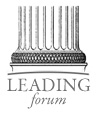 
Posted by Michael McKinney at 08:05 PM
07.03.25

Leading Thoughts for July 3, 2025
IDEAS shared have the power to expand perspectives, change thinking, and move lives. Here are two ideas for the curious mind to engage with: Louis L’Amour on creative living: “If you want to be creative, go where your questions lead you. Do things. Have a wide variety of experiences and take field trips to distant places. Reach outside of your everyday sphere of influence; it keeps you being too provincial. We can’t learn anything from experiences we’ve never had. Life is too long not to do it right, not to participate — we end up dying before we live. There’s a lot of seconds between birth and death when you’ve withdrawn from the game. To die before we live is agonizing. Life is too long not to do it right.” Source: Mike Vance: Men at the Top TV Show 1964 Josh Axe on living by principle: “If you want to enjoy success in your relationships, career, and health, choose a path that is lined with principles. An unprincipled person is like a captain trying to steer a ship without navigation, lost at sea. Without any truth or standards to guide them, they lack wisdom. Without wisdom, they make poor choices. Making poor choices reinforces poor character.” Look for these ideas every Thursday on the Leading Blog. Find more ideas on the LeadingThoughts index.
Posted by Michael McKinney at 02:28 PM
07.01.25

First Look: Leadership Books for July 2025
HERE'S A LOOK at some of the best leadership books to be released in July 2025 curated just for you. Be sure to check out the other great titles being offered this month.
Have you ever wanted to create a business that's not only good but great? Have you ever felt as though you're destined to do something bigger and more significant with your life? If so, you should know that you don't need millions in funding, a marketing department, or influencer status. If you have an idea, the determination to bring it to life, a deep and abiding belief in your product, and a devotion to your customers, you already have the humble starting point behind one of the world's fastest-growing and most beloved brands: Beekman 1802. In this book, for the first time, Ridge and Kilmer-Purcell present the twelve principles that made the biggest difference in their entrepreneurial journey, and show how these principles are relevant for anyone ready to defy the odds and grow a brand that matters.
In Flow Leadership, Gaëlle Devins―experienced executive and founder of FlowFusion―delivers a groundbreaking approach to unlocking the full potential of your team. This book introduces the 3P Assessment & Model, a powerful framework built on years of hands-on leadership, workshops, and academic research, helping leaders balance the three essential elements of high-performing teams: People, Purpose, and Performance. When these three forces align, they create a sustained state of FLOW@WORK―where individuals, teams, and entire organizations thrive. Gaëlle Devins explains how to ensure the people you lead at work feel their best, are at their best, and produce their best work.
This book presents a game-changing synthesis of 50 years of leadership research as a comprehensive guide for seasoned and aspiring leaders, and anyone who wants to help their boss become a better leader. Authors Jeffrey Hull and Margaret Moore, translate academic research and their extensive experience in leading and coaching into a practical, self-coaching roadmap for your own growth in these times of exponential change and disruption. This book organizes the science of leadership (15,000+ studies and articles showing what improves individual, team, and organizational performance) into nine capacities which build upon each other. Each capacity is brought to life by real-life stories, a science overview, practices, and ways to deal with overuse.
Great teams can sometimes feel like magic. So much so that it can be hard to pin down why they work so well. But such dynamics are explainable—and replicable. And at their heart is emotional intelligence. While much has been written about the power of emotional intelligence at the individual level, little has been said about the benefits of this concept for groups. And it's not as simple as putting a number of emotionally intelligent people together and expecting them to work cohesively. Instead, leaders need to build a team culture around agreed-upon norms and habits. This book combines thirty years of research and team development to present a model for building and leading emotionally intelligent teams.
As leaders, we all hit a point when things stop going well. A problem emerges that we think we can handle but discover we can't. The tools that got us this far somehow stop working. We don't understand; what are we missing? What we don't see is what we can't see: we have blindspots. It's a known fact that we're often not great judges of ourselves, even when we think we are. Sometimes we're simply unaware of a behavior or trait that's causing problems. Other times, where we see normal, effective behavior, others see tremendous deficits. Bottom line: until we uncover these blindspots, we can’t move forward or deliver on our goals as leaders. The good news is that you can learn to do your own blindspotting. Blindspotting provides a framework for understanding six types of blindspots.
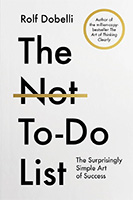  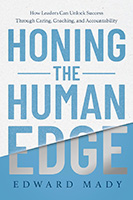 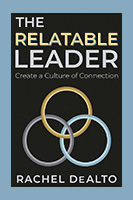
“You can't think well without writing well, and you can't write well without reading well. And I mean that last "well" in both senses. You have to be good at reading, and read good things.” — Paul Graham, Y Combinator co-founder
Posted by Michael McKinney at 06:02 AM
06.30.25

LeadershipNow 140: June 2025 Compilation
See more on
Posted by Michael McKinney at 08:18 AM
|
BUILD YOUR KNOWLEDGE
 
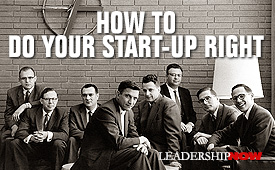
How to Do Your Start-Up Right STRAIGHT TALK FOR START-UPS 
Grow Your Leadership Skills NEW AND UPCOMING LEADERSHIP BOOKS 
Leadership Minute BITE-SIZE CONCEPTS YOU CAN CHEW ON 
Classic Leadership Books BOOKS TO READ BEFORE YOU LEAD |